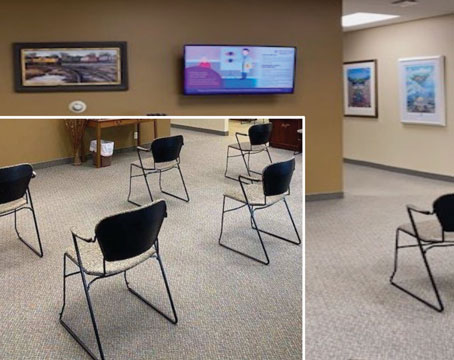A significant number of your cataract patients will still need glasses following surgery. Even if their intraocular lens calculations were perfect, patients may need glasses for reading, computer work or for that all-important UV protection. Also, if their surgery is to be performed on one eye at a time, one pair of glasses will be made following each surgery.
In this article, I'll explain how accepting Medicare assignment for post-cataract eyewear isn't as difficult as it may seem. With it, you can boost your optical sales and offer your patients a "value-added" service. What little you might sacrifice in fees will come back to your dispensary in patient satisfaction and loyalty.
Doing the Paperwork
Too many ophthalmology practices choose not to accept Medicare assignment for post-cataract eyewear because the returns aren't considered to be worth the effort. If you don't accept assignment, however, your office still gets involved, and has to fill out the CMS 1500 (formerly HCFA 1500; the actual form is the same) paperwork. Then the reimbursement and explanation of benefits come directly to the patient, and invariably, patients feel that too much money came out of their pockets.
Satisfied Patients Spend
When you do accept assignment, your staff can calculate on the spot what Medicare and the secondary insurer will pay for, and exactly how much the patient will have to pick up. With this information, many patients decide to "upgrade" their eyewear purchase, since they are getting a sizeable allowance from their Medicare and secondary insurer. Your staff handles the paperwork; you receive Medicare reimbursement directly. More importantly, all hassles and inconvenience are eliminated from the patient's point of view.
Get Organized
The keys to accepting Medicare assignment for post-cataract eyewear are information and organization. Your dispensing staff must become educated about what is (and is not) covered by Medicare and the secondary insurer (if the patient has one). Dispensers must be well-organized in their presentation to post-cataract patients. Following is a step-by-step approach.
• Step 1: Obtain your Medicare supplier number for eyewear. This is an entirely different number from the one you use for medical submissions. To do this, fill out a CMS 855-S application, available at http://www.cms.hhs. gov/providers/enrollment/forms/, and then submit this to the National Suppliers Clearing House. For complete details, visit palmettogba.com.
• Step 2: Visit the website of your region's Durable Medical Equipment Regional Carrier to which you will submit claims (See box below). Read the DMERC news posted on the site, and learn about the V codes (Medicare fee codes for eyewear). Fee code amounts change annually and other code changes may occur. For instance, for 2004, 10 V codes were deleted and 12 were added. You will be able to see what amount is allowed by Medicare for each V code. Some items are disallowed by Medicare, such as deluxe frames, progressive lenses and photochromatic lenses. That doesn't mean the Medicare patient can't select these options, only that the patient may have to pay for them.
| DMERC Websites |
|
DMERC A: DMERC B: DMERC C: DMERC D: |
• Step 3: Create an information sheet for patients. On this sheet, take a positive tone, telling post-cataract patients that they can have a "good portion" of their eyewear paid for by Medicare and their secondary insurer. On the sheet, make sure you state clearly:
• Medicare will pay 80 percent of the allowable amount on eyewear (items covered by the V codes).
• Secondary insurance will pay the other 20 percent of the allowable amount. If the patient doesn't have secondary insurance, this 20 percent is his or her responsibility.
• Any cost above the allowable amount (i.e., the cost of disallowed items) is the patient's responsibility.
At the end of the worksheet, include an ABN (Advance Beneficiary Notice) that will show the amount the patient will pay out of pocket. When this is filled out, have the patient sign the ABN and keep it with her chart.
• Step 4: Assist the patient in selecting eyewear options. When this is completed, compare the options to the V codes. Note what is covered, and what isn't. Your staff should be well-informed about the nuances of coverage. For instance, while progressive lenses are disallowed, the claim may show "bifocals" or "trifocals" and this will be covered. The patient then pays the difference between the covered amount and the amount for progressive lenses.
• Step 5: Congratulate the patient on the beautiful pair of glasses, paid for in part by Medicare and their secondary insurer. If this purchase follows cataract surgery on the first eye, inform the patient that Medicare will cover another pair of glasses following the surgery on the fellow eye. Note that if the patient doesn't get a new pair of glasses between surgeries, he or she is still only entitled to one pair of glasses after the second surgery.
• Step 6: File the eyewear claim according to the guidelines. As of October 2003, electronic filing became mandatory, but there are exceptions depending upon the size of the practice's dispensary staff. Put all the information about the eyewear charges (the V codes) on the CMS 1500 form in Section 24. Be sure to list all items, covered or non-covered. Fill in the total amount of the patient's eyewear on line 28. Note that because you do accept assignment, don't put anything in line 29 or 30.
• Step 7: It's important to put information about the secondary insurer on this form. Medicare will submit a cross-over claim and if the patient has a secondary insurer, that insurer will pick up 20 percent of the allowable cost. This information belongs on line 9d. Be sure to include the insurer's "Other Carrier Name and Address" number on cross-over claims. OCNA numbers are found on your DMERC website in the Suppliers Manual. Some secondary insurers will automatically crossover from Medicare, though some will not. To be on the safe side, always enter the secondary insurer's OCNA number on line 9d.
• Step 8: Be sure your staff is well-trained about submitting claims to DMERC. Medicare probably offers courses in your region, so check your DMERC website or ask your ombudsman. You should send your optical and/or billing manager to the course and she can then train the rest of the optical/billing staff. The American Association of Dispensing Ophthalmologists offers such courses, aado.net.
If your dispensing staff follows these steps, they'll find that the increased patient satisfaction and loyalty will have made the effort well worth it.
Ms. Fritz is president of Ophthalmology Resources, specializing in MD dispensary start-ups and operations management. Contact her at pf.mdresources@att.net.






